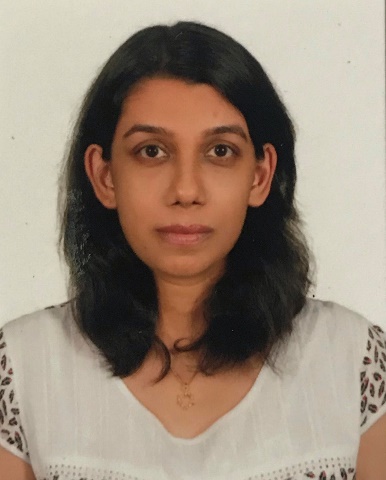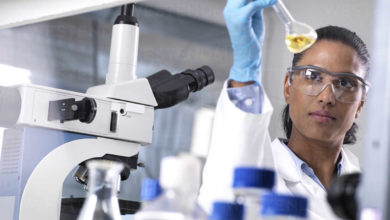Microalgae for a Sustainable Bio-based Economy in Sri Lanka
Dr. Thilini U. Ariyadasa

Microalgae are unicellular photosynthetic microorganisms found in aquatic environments, which produce valuable compounds such as lipids, proteins and carbohydrates, as well as numerous high-value metabolites such as carotenoids, phycobiliproteins and polyunsaturated fatty acids (PUFA) [1]. Furthermore, in comparison to conventional plants, microalgae possess favourable attributes such as superior ability of fixing carbon dioxide (CO2), higher photosynthetic efficiencies and increased biomass productivities. Moreover, microalgae have the capability to grow in seawater or wastewater, and in land unsuitable for agriculture. Therefore, production of microalgae biomass does not necessarily consume arable land or freshwater [2]. Hence, considering these characteristics, microalgae are a potential feedstock for food, animal feed, cosmetics, pharmaceuticals, and bioplastics industries as well as for bioenergy production. In addition, microalgae can be utilized for bioremediation applications such as treatment of wastewater streams and capture of CO2 emissions from flue gas [3,4]. Thus, microalgae are viewed as a promising group of microorganisms in the context of a sustainable bio-based economy.
Considering the many advantages of microalgae as a biomass feedstock, the production of biofuels and bioenergy is a major application of microalgae that has piqued the interest of scientists. The lipid and carbohydrate fractions of biomass can be extracted and subsequently converted to fuels such as biodiesel, bio-oil and bioethanol. Unlike fossil fuels, microalgae-based biofuels have a lower carbon footprint, because approximately 1.83 kg of CO2 is captured during the production of 1 kg of microalgae biomass. Even though scientists are ambitiously working towards bioenergy production using microalgae, the economic feasibility of the process has been questioned due to the high expenditures in cultivating algae and the downstream production processes. Therefore, extensive research is being performed to develop cost-effective cultivation systems and processing routes.
Due to the low-value of microalgal biofuels, a more feasible option for valorising microalgae would be to produce high-value co-products such as carotenoids, bioactive peptides and polyunsaturated fatty acids. Some of these compounds produced by microalgae have market values which exceed $7000 per kg, due to their applications as food supplements, natural colourants, pharmaceuticals and cosmetics. The synthesis of high-value products by microalgae paves the way for the establishment of biorefineries, wherein the key concept is to wholistically valorise all fractions of the microalgae biomass. In such biorefineries, microalgae biomass would be first used to extract economically valuable high-value products, and the residual biomass would be utilised to produce bioenergy. This concept would substantially enhance the feasibility of biofuel production, because the high costs involved in the process could be recovered by the high market value of the concurrently produced high-value compounds. Hence, through proper implementation of microalgae-based biorefinery systems, vigorous economic advantages can be achieved while addressing the issues with regard to sustainable energy. Moreover, the sustainability of microalgal biorefineries could be further enhanced by the integration of bioremediation applications such as simultaneous wastewater treatment and CO2 sequestration. As shown in Fig. 1, numerous research articles in literature have demonstrated the feasibility of utilizing industrial wastewater or flue gas as an alternative source of nutrients for manufacture of microalgal high-value compounds and biofuels.

Fig.1: Use of microalgae for simultaneous wastewater treatment and high-value biomass production (Fernando et al., 2021) [3]
Nonetheless, despite of the potential applications, microalgae has not been widely explored in a Sri Lankan context. There are 103 natural river basins in Sri Lanka with a total length of about 4,500km, and a significant number of reservoirs including ancient irrigation reservoirs and recently constructed multi-purpose reservoirs with a total area of 169,941 hectares [5]. In addition, the country has a 1700 km long coastline and 517,000 km2 of ocean which is around 7.8-fold higher than the land area of the country [6]. Although microalgae would be found in almost all these water bodies, most of the native microalgae species have not been identified, thus concealing enormous opportunities forsustainable bio-based production in Sri Lanka. Therefore, modern techniques can be used to isolate microalgae from the natural environment and subsequently screen them for their applicability as feedstock for production of high-value compounds and biofuels. Furthermore, water is one of the most essential resources required for the microalgae cultivation from tecno-economic perspective. Thus, considering the wide availability of free/inexpensive pure fresh water and marine water, microalgae cultivation in Sri Lanka is undoubtedly practicable.Moreover, being photosynthetic organisms, microalgae are cultivated in advanced culture systems which harness light energy for biomass production. In temperate countries with drastic seasonal variations, microalgae are often cultivated using artificial lighting due to the lack of sunlight throughout the year. Nonetheless, the use of artificial lighting substantially increases the cost of production. Furthermore, the cultivation of microalgae during the winter is a challenging task due to the low temperature. In contrast, being a tropical country with the abundance of sunlight throughout the year, Sri Lanka could be an ideal location for year-round production of microalgae biomass.


Fig.2: Laboratory-scale array of photobioreactors at the Department of Chemical and Process Engineering, University of Moratuwa
However, further research is required to identify suitable locally-isolated microalgae species with biotechnological significance. Moreover, there is a significant gap in research on the development of efficient cultivation systems suited for the Sri Lankan climate and identification of feasible routes for biomass processing. In this context, funding agencies such as the State Ministry of Skills Development, Vocational Education, Research & Innovation have been aiding researchers in Sri Lanka for the development of microalgae-based bioproducts. Fig. 2 shows a system of photobioreactors developed for laboratory-scale cultivation of microalgae at the Department of Chemical and Process Engineering, University of Moratuwa, as a part of the project “Process Development and Assessment of Microalgae-Based Biofuels and Value-Added Products” funded by the ministry under the Indo-Lanka collaborative research programme. The project focused on the development of cost-effective cultivation systems for large-scale production of microalgal biomass, maximizing product yields using mathematical models, and development of subsequent biorefinery processes to co-produce high-value compounds and biofuels.
Therefore, it is evident that biotechnological production of microalgae-based products within the country could be highly advantageous to uplift the economy of Sri Lanka by creating new job opportunities for small and medium scale enterprises whilst generating export revenue for the country. Thus, in the near future, the vast potential of microalgae could be harnessed in Sri Lanka to build a thriving bio-based economy.
References
[1] V.C. Liyanaarachchi, M. Premaratne, T.U. Ariyadasa, P.H.V. Nimarshana, A. Malik, Two-stage cultivation of microalgae for production of high-value compounds and biofuels: A review, Algal Res. 57 (2021) 102353. https://doi.org/10.1016/j.algal.2021.102353.
[2] M. Aresta, A. Dibenedetto, Beyond fractionation in the utilization of microalgal components, in: Bioenergy with Carbon Capture Storage, Elsevier, 2019: pp. 173–193. https://doi.org/10.1016/B978-0-12-816229-3.00009-0.
[3] J.S.R. Fernando, M. Premaratne, D.M.S.D. Dinalankara, G.L.N.J. Perera, T.U. Ariyadasa, Cultivation of microalgae in palm oil mill effluent (POME) for astaxanthin production and simultaneous phycoremediation, J. Environ. Chem. Eng. 9 (2021) 105375. https://doi.org/10.1016/j.jece.2021.105375.
[4] M. Premaratne, V.C. Liyanaarachchi, G.K.S.H. Nishshanka, P.H.V. Nimarshana, T.U. Ariyadasa, Nitrogen-limited cultivation of locally isolated Desmodesmus sp. for sequestration of CO2 from simulated cement flue gas and generation of feedstock for biofuel production, J. Environ. Chem. Eng. 9 (2021) 105765. https://doi.org/10.1016/j.jece.2021.105765.
[5] K.A.U.S. Imbulana, N.T.S. Wljesekara, B.R. Neupane, Case study : Sri Lanka Sri Lanka National Water Development Report, UN-Water. (2006) 1–221.
[6] D. Koralagama, Community perception towards a setback area: a case study in Galle district, Sri Lanka, IIFET 2008 Vietnam Proc. 2 (2008) 1–11.




